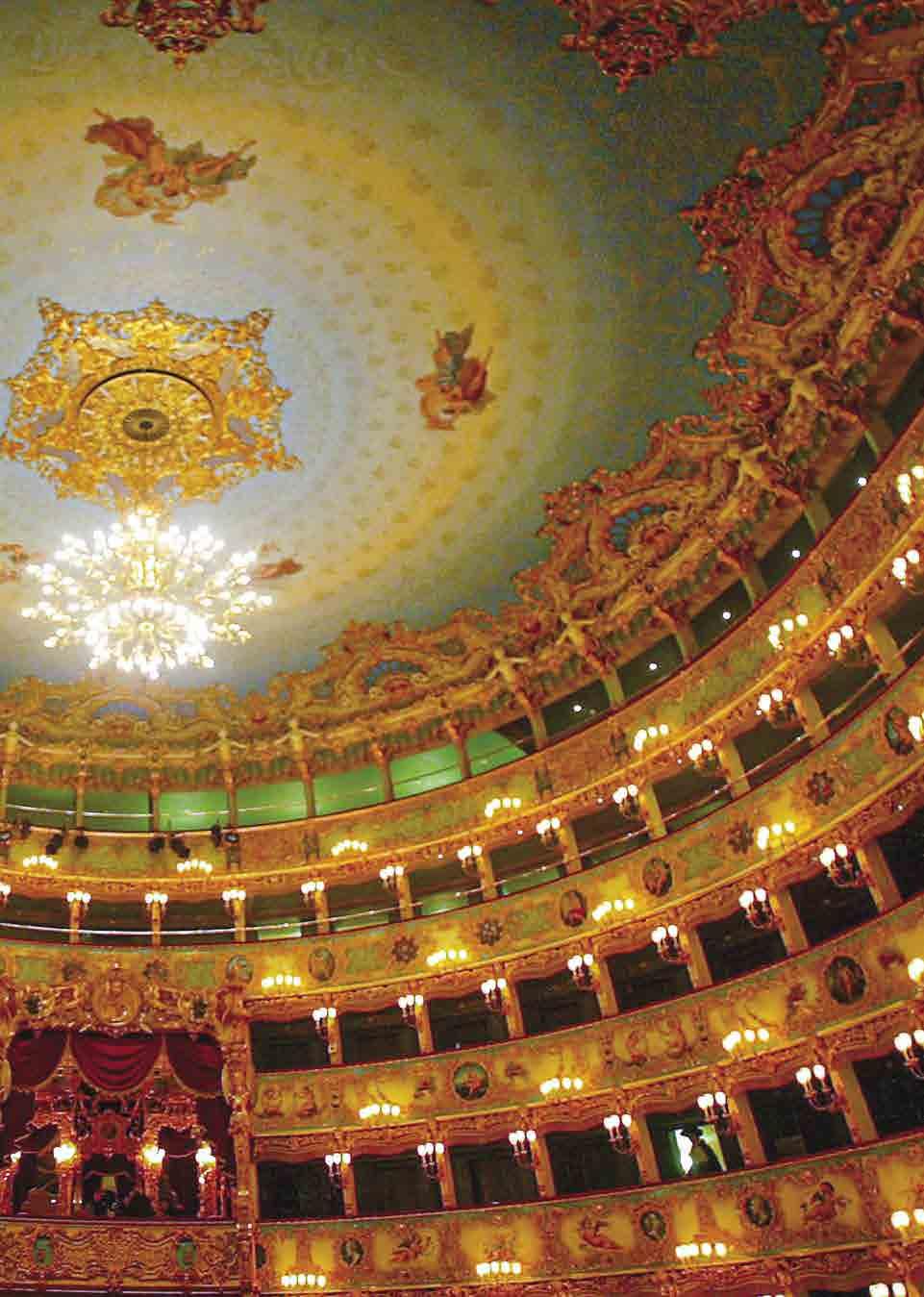
9 minute read
A Lifetime Partner of Art and Culture
A Lifetime Partner of Art and Culture
From the renovation of Teatro La Fenice in Venice to the restoration of the statue of Saint Mark on the spire of Notre-Dame Cathedral, and numerous initiatives in support of global artistic heritage.
Advertisement
Throughout its 190-year history, the “Lion of Trieste” has been associated with masterpieces of Italian and global arts.
THE EDITORIAL OFFICE
LA FENICE RISES FROM ITS ASHES
Rehearsals had just finished at Teatro La Fenice [“The Phoenix”] for Lucia di Lammermoor, the Gaetano Donizetti opera, on the evening of December 12, 1836. A few hours after the music and arias that had filled the theatre had died down, they were replaced by the crackling of flames: the first terrible fire to destroy Giannantonio Selva's architectural masterpiece. The blaze raged on for three days and the fire service, who had been summoned by the custodian of the theatre, were able to save the foyer, the ballroom and the Sale Apollinee [“Apollo’s Rooms”]. The rest of the building no longer exists. As in ancient mythology, however, the history of the storied Venetian theatre can also be summed up in the Latin expression “post fata resurgo” – after death I rise again. And so, in almost no time at all, on December 26, 1837, the stalls filled up once more for a performance of Antonio Cortesi’s Rosmunda in Ravenna. In the intervening year, the theatre had undergone a process of rapid reconstruction, overseen by the architects Tommaso and Giambattista Meduna.
The reconstruction of Teatro La Fenice was made possible by the 240,000 Austrian lira payout by Generali. This insurance policy issued to the Venetian theatre in 1832, mere months after the company’s foundation, was an important innovation – even within the wider context of the insurance industry. The goal was clear: expanding the original policy with La Fenice to other Italian theatres, which until that time were not eligible for insurance contracts. This objective was successful, and in 1848 a fire insurance policy was signed with the Teatro San Carlo in Naples. Then, 160 years after the first disaster, Teatro La Fenice burned down once more, and this time it was due to arson. The event received enormous media coverage: on January 26, 1996 and over the days that followed, television cameras and newspaper reporters followed with bated breath the second major fire to break out within the iconic Venetian building. The flames spread for hours, and after working through the night, the firefighters were finally able to bring them under control. Once more insured by Generali, the theatre would reopen more than seven years later, on December 14, 2003.
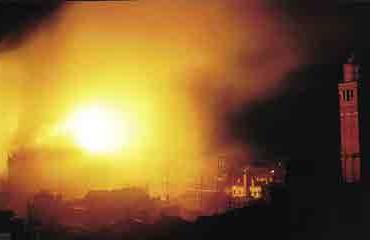
The second major fire at the La Fenice theatre in Venice on January 26, 1996.
FOTOATTUALITÀ
THE RESTORATION OF THE NOTREDAME STATUE
Twenty years later, another fire left millions of people holding their breath and newspaper editors holding the front pages. Late evening on April 11, 2019. A column of grey smoke rises over NotreDame de Paris cathedral: one of the world’s most famous gothic buildings and one of the most visited monuments in Paris is going up in flames. Within an hour, the famous flèche, the spire of the building, is gutted by the flames and collapses in front of the world’s media. The roof is also destroyed.
Plans for the restoration and reconstruction of the cathedral are launched in the immediate aftermath of the disaster. The Notre-Dame Foundation launches an appeal to restore the 16 statues that formed the spire of the cathedral, depicting the 12 apostles and four evangelists. Generali offers to oversee the restoration of the sculpture of Saint Mark, the patron saint of Venice who is represented on the Group’s emblem in the form of the winged lion. Today, the symbolic sculptures of the Parisian church are in the hands of a restoration specialist in the Dordogne department whose workshop is open to the public and to aficionados who wish to observe the restoration process in action, as they wait for the statues to once more soar above the Parisian skyline. Generali’s influence on French culture, however, began a few years previously. In 1997, Generali launched the first restoration project of a series of Italian artworks in the collections of the Institut de France. Over the years, the Group also sponsored various exhibitions – including Utopia at Work in the Château de Chambord in the Loire Valley and Éblouissante Venise at the Grand Palais in Paris. Nor were these activities limited to promoting painting and sculpture. In Italy, for example, the Generali per la musica programme that was launched in 2012 has seen the “Lion of Venice” join forces with some of the most prestigious Italian music academies, including La Scala in Milan, La Fenice in Venice and the Accademia Nazionale di Santa Cecilia in Rome. Also in the capital, Generali opened the Radici del Presente [“Roots of the Present”] museum, hosting the Group’s archaeological collection.

Generali France is patron of the restoration of the St Mark’s Lion, one of the 16 statues that used to decorate the spire of Notre-Dame cathedral and were removed on April 11, 2019, just days prior to the fire.
WHERE IT ALL BEGAN
From Italy to Europe and back again. By turning our gaze back to the Belpaese, we can observe another effect of the ties between Generali and its patronage of the arts. This is a clearly defined goal: encouraging the protection and reassessment of the cultural heritage of some of the company’s key locations. The engagement with the local artists and architects provides a unique link with local communities, as well as serving as a demonstration of the Group’s status. Once more, the earliest examples can be found far in the past, this time in 1851, when Generali decided to purchase the Ca’ Corniani estate in the Caorle lagoon in Veneto, along the ancient course of the Livenza River. This served a twin goal: diversifying the company's real estate investments while simultaneously furthering agricultural development and, more importantly, reclaiming the land. A small community of approximately three thousand residents sprang up in place of the paddy fields and marshland, a community that is still there today. Its historic buildings host artistic and cultural events, festivals and exhibitions. Finally, any discussion of Generali’s history would be incomplete without reference to Trieste, the city in which the company started out.
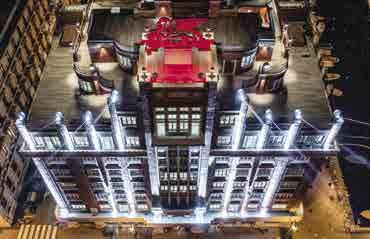
Palazzo Berlam in Trieste, the site of the Generali Archives. In October 2021, during the Barcolana, the sailing event that Generali has supported for over 40 years, Palazzo Berlam is lit up with lights, images and quotes that sum up a shared and sustainable vision of the future.
GIULIANO KOREN
The former port of the Austrian Empire is the site of Palazzo Carciotti and Palazzo Geiringer, the company’s headquarters in the capital of Italy’s northeasternmost region of FriuliVenezia-Giulia. Since 1932, the imposing Palazzo Berlam has also stood proudly between these two buildings. The “Red Skyscraper”, constructed during the 1920s, has recently undergone a thorough renovation by the architect Mario Bellini, which was completed in 2015. This work restored the building to its former glory and converted it into the headquarters of the Generali Group Academy, the international training centre of the Group. In addition to its primary role, this building also houses the Group’s Historical Archive, inaugurated this year as part of Generali’s 190th anniversary celebrations. This is where Generali holds its archival treasures, with a vast store of documents and testaments that narrate the Group’s history. Here, between the shores of the Adriatic and the Canal Grande, facing the Gulf of Trieste, visitors can now find all the information that has passed through the company and its employees and agents over the years – from Franz Kafka’s personal file to the official documentation on Umberto Nobile, the explorer famed for his expedition to the North Pole.
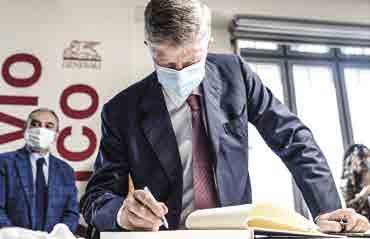
Generali Group Chairman Gabriele Galateri di Genola visiting the Historical Archive.
LOOKING TO THE FUTURE
The next stage in this long journey is yet to be written. Generali is working to create new environments that combine functionality and artistic value. Some of these have been launched in recent years. CityLife in Milan, for example, is one of the most important urban redevelopment projects in Europe. In 2004, the Generali Group won an international tender for the rights to the redevelopment.
The project included the creation of a pedestrianised zone, the second public park in the city, and a residential and commercial complex, as well as three skyscrapers – il Dritto [“The Straight One”], lo Storto [“The Twisted One”] and il Curvo [“The Curved One”] – that have assumed iconic status as symbols of Milan’s present and future. Lo Storto, also known as the Hadid Tower after Zaha Hadid, the Anglo-Iraqi architect who designed it, became the symbol of Generali’s strategy in 2019. This skyscraper, renamed Generali Tower, is an example of modern design as well as sustainability in terms of its energy demand. The next step in CityLife’s architectural development is set to be the construction of a new sustainable building, designed by the Danish studio BIG, which will be known as CityWave. Fully covered in solar panels, this building will act as a giant photovoltaic park that is also able to store and reuse rainwater.
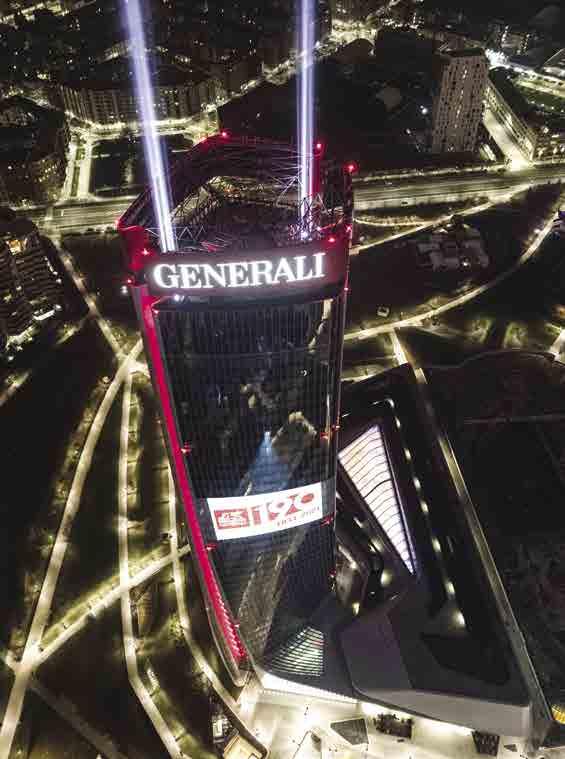
The Generali Tower, also known as the Hadid Tower, the headquarters and symbol of Generali in Milan. In February 2021, the Generali Tower was illuminated as a symbolic launch event for Generali’s 190-year anniversary celebrations.
RETURN TO VENICE
As is often the case, this story ends where it began. Here, where the Venice Gardens Foundation working together with Generali restored the city’s beautiful Royal Gardens, a few short steps away from Piazza San Marco. In 2014, the Group also contributed to the opening of the new Palazzo Cini Gallery. “Venice represents a dialogue between creativity, human aspiration and nature”, stated the architect David Chipperfield, when interviewed by L’Espresso in November of last year about the famous city of waterways and bridges. A magical place, where Chipperfield is putting the finishing touches to the restoration of the historic Procuratie Vecchie building in Piazza San Marco. This project includes the restoration of the first and second floors, covering a combined floor space of around 7,000 m2, as well as the renovated main entrance, up to the third floor. This area, the highest part of the building that is owned by Generali and where the company had its official headquarters in its early days, will be the new headquarters of The Human Safety Net, the Group’s initiative to support families, children and communities in difficulty. Today, this organisation supports over 30,000 people and works in collaboration with over 50 NGOs. We will meet in Venice, then, to inaugurate a new historic home that is set to open its doors to the public for the first time in 500 years.
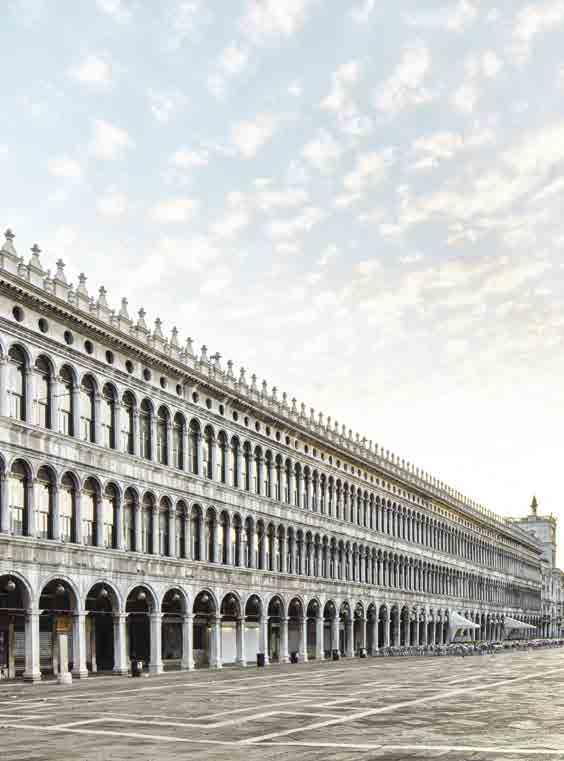
The Generali-owned Procuratie Vecchie complex in Venice undergoing renovation. The work includes a thorough renovation of the third floor, creating public exhibition spaces displaying the work of The Human Safety Net Foundation, work spaces and an auditorium. From here, the Human Safety Net will also carry out its activities in support of the most vulnerable communities in countries where the Generali Group is active.
ALESSANDRA CHEMOLLO










